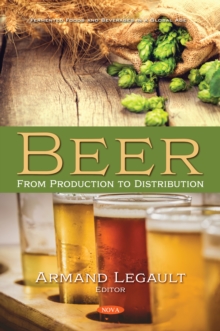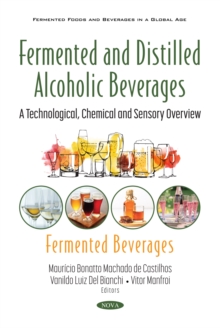
New Frontiers in Sparkling Wine Production PDF
Edited by Rosanna Tofalo
Part of the Fermented Foods and Beverages in a Global Age series
Description
This book offers an overview of the microbiological, technological/oenological, and economical aspects concerning sparkling wine production.
The first chapter reviews the main production methods used for sparkling wine production (traditional, Charmat, ancestral, transfer methods).
Chapters two, three and four focus on the microbiological aspects of sparkling wine production.
In particular, chapter two focuses on Saccharomyces cerevisiae and its main physiological and metabolic characteristics.
Chapter 3 describes the role of non-Saccharomyces yeasts during the first and second fermentations of sparkling wines and the main advantages deriving from their use.
The mechanisms of yeast flocculation, the influence on the autolysis outcome and the definition of aroma profile of the final product are reported in chapter four.
Chapters five, six, seven and eight offer an overview of the main technological/oenological aspects of sparkling wine production.
Chapter five is focused on sparkling wine aging and describes in detail the autolysis outcome, which is the key process that takes place during aging.
In particular, the mechanisms of yeast autolysis are described and the role of the released compounds in foam formation and aroma profile are shown.
The main effects of microbial encapsulation for sparkling wine production and the main effects of this approach on their characteristics are presented in chapter six.
The difference between foamability and foam stability, as well as the main factors influencing the foam formation (foam active compounds, proteins, lipids, phenolic compounds, organic acids) are reviewed in chapter seven.
Chapter eight is focused on one of the most attractive characteristics of sparkling wine: the bubbling.
The bubble nucleation process, as well as the main factors influencing bubble size are described.
The main methods used for sparkling wine analysis, with particular attention paid to official methods described in the Compendium of International Methods of Analysis of Wines and Musts of the International Organization of Vine and Wine are presented in chapter nine.
Chapter ten describes the main grape cultivars used for sparkling wine production all around the world, and the structure of the sparkling wine market.
Information
-
Download - Immediately Available
- Format:PDF
- Publisher:Nova Science Publishers, Inc.
- Publication Date:29/04/2024
- Category:
- ISBN:9798891136427
Information
-
Download - Immediately Available
- Format:PDF
- Publisher:Nova Science Publishers, Inc.
- Publication Date:29/04/2024
- Category:
- ISBN:9798891136427










